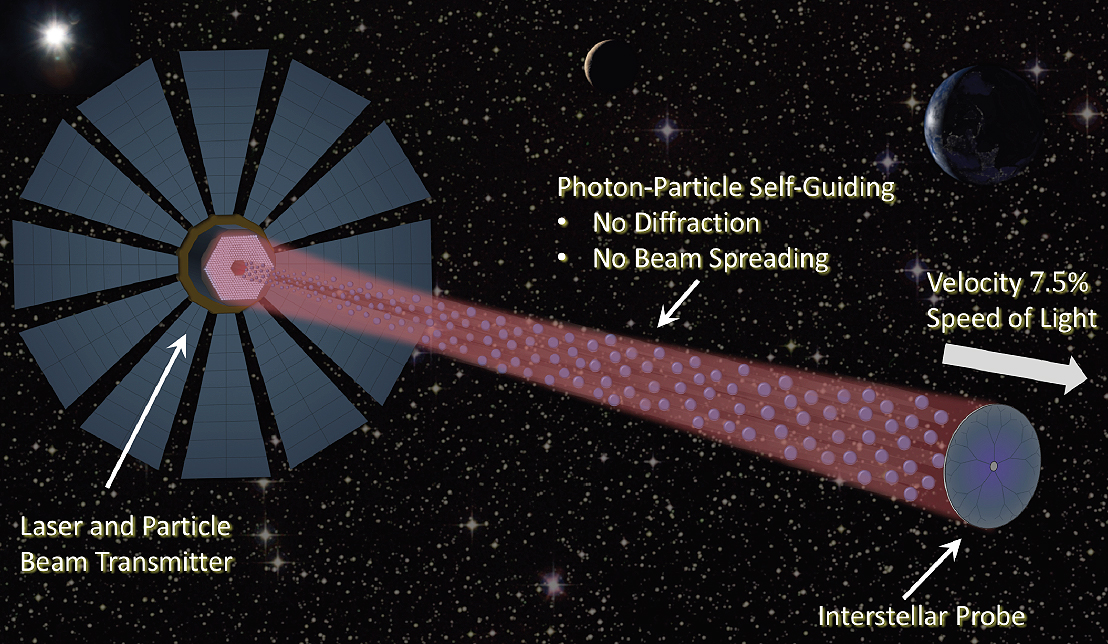Chris Limbach
Texas A&M Engineering Experiment Station
New and revolutionary propulsion systems are needed to undertake challenging long-distance missions, such as to the Kuiper belt, Oort cloud and nearby stellar systems. We propose an innovative beamed propulsion architecture that would enable interstellar missions to Proxima Centauri b at nearly 10% the speed of light. This architecture dramatically increases the distance over which the spacecraft is accelerated while simultaneously reducing the beam diameter at the transmitter and probe from 10’s of kilometers to less than 10 meters. These attributes translate into a more compact system and increased payload mass compared with laser propulsion alone, enabling science missions that are not currently feasible.
The key innovation of our propulsion concept is the unique coupling of a neutral particle beam with a laser beam, a scheme which nearly eliminates thermal expansion and diffraction during beam propagation through space. In Phase I, the physical basis of this concept and the unique features of this unexplored mode of propulsion were investigated. Through this effort, the underlying physical foundation has been verified and the governing equations have been derived from first principles. Exploration of numerical approaches to high fidelity modeling has also been initiated. Using a mission design tool developed in Phase I, a strong scaling of payload mass with velocity was discovered, leading to the finding that a 60-year mission at 7.5% the speed of light provides a payload mass of order 1 kg. A survey of the technical literature revealed that the basic elements of the combined beam propulsion system currently exist or are near-term extrapolations of present capabilities. The Phase I results, having validated the physical basis and motivating application of this new propulsion technology, advanced its technology readiness from TRL 0 to TRL 2.
The primary research objectives of the Phase II study are: A) to analyze the feasibility and design of momentum transfer mechanisms to generate thrust for the spacecraft, B) to understand the dynamical behavior of the combined beam system through computational modeling, and C) to develop experimental capability for a high mass flow rate and low divergence neutral beam source. New computational tools are needed to address the stability of self-guiding, and will proceed through improving and coupling the current 2D axisymmetric beam propagation models developed in Phase I. A fully-coupled solution framework running on high performance computing resources will allow investigation of self-guided propagation, including the effects of laser heating and radial instabilities and their dependence on non-dimensional system parameters. The development of the necessary atomic beam source will be addressed through a specialized laboratory facility for cold neutral beam experiments based on laser Doppler cooling of a supersonic alkali vapor jet. This cold atomic beam will be injected into an extended path, ultra-high vacuum system to study its properties during propagation. Diagnostic measurements of the beam thrust, density profile and temperature at stations along the propagation path will provide fundamental data for characterizing the system performance and validating numerical models. Through the above combined theoretical, modeling and experimental efforts, we expect to advance self-guided beamed propulsion from TRL 2 to TRL 3+ by the end of the Phase II research program.
2019 Phase I, II, and III Selections





























